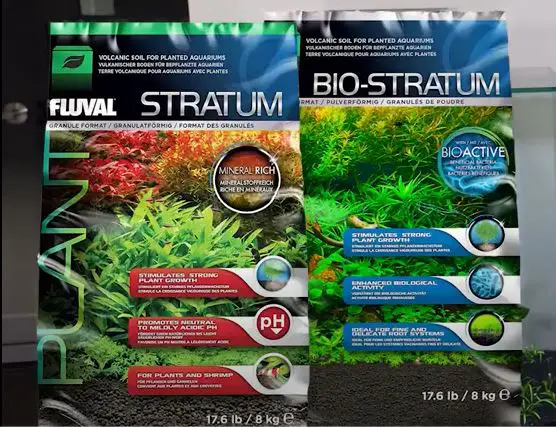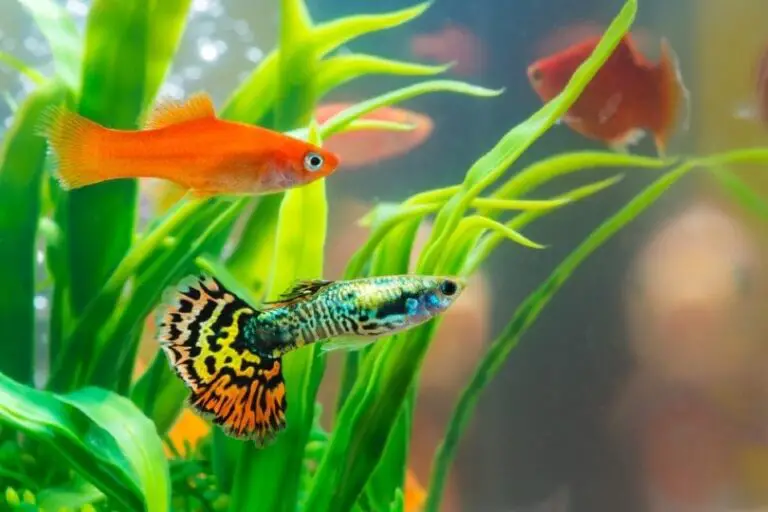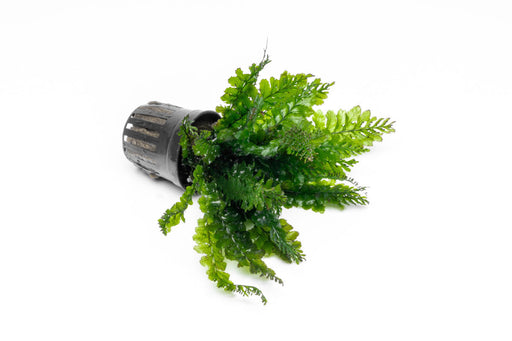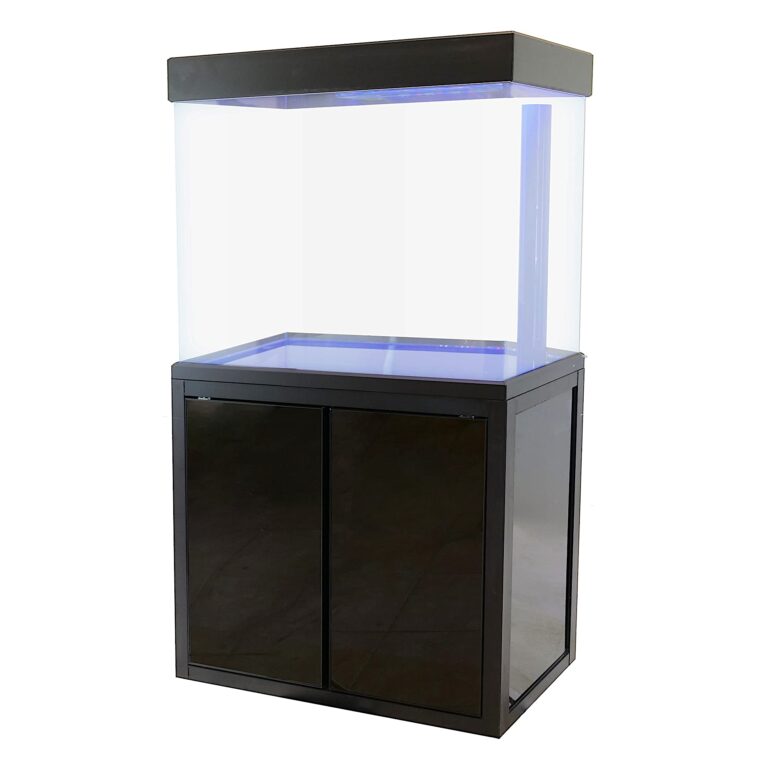Fluval Stratum vs Bio Stratum: Which Substrate is Right for Your Aquarium?
Fluval Stratum and Bio Stratum are two of the most popular substrates used by aquarists.
Both substrates have their own unique features and benefits that can enhance the growth of aquatic plants and provide a healthy environment for aquatic animals.
As an avid aquarist, I have used both Fluval Stratum and Bio Stratum in my tanks and have conducted extensive research on their properties and effectiveness.
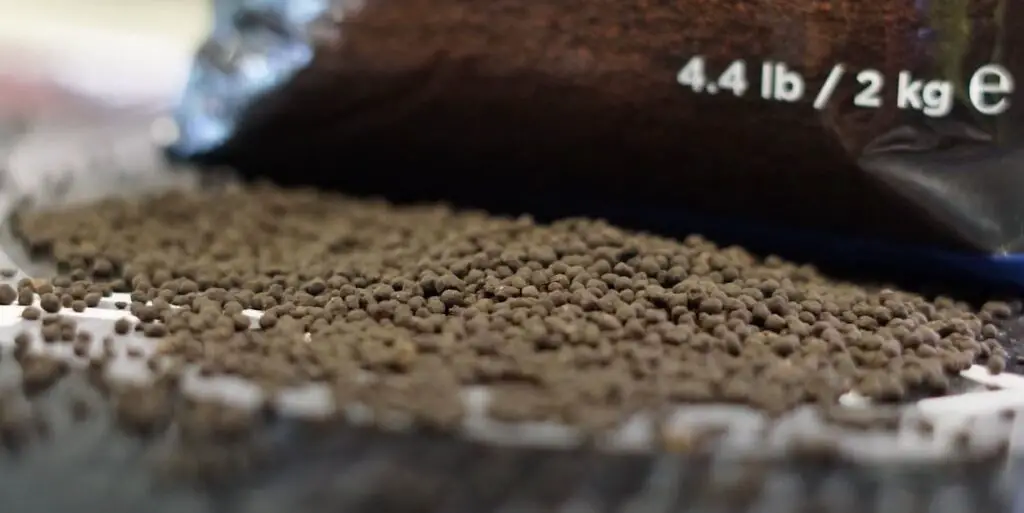
Fluval Stratum is a clay-based substrate that is designed to promote healthy plant growth.
It is made from fired clay that is porous, lightweight, and rich in minerals that are beneficial for aquatic plants.
Fluval Stratum is ideal for planted tanks and is known for its ability to buffer water pH levels and reduce hardness.
It is also popular among shrimp keepers as it provides a soft and comfortable substrate for shrimp to molt.
Bio Stratum, on the other hand, is a substrate that is specifically designed for the growth of beneficial bacteria in the aquarium.
It is made from volcanic soil and is rich in minerals and nutrients that help to establish a healthy bacterial colony.
Bio Stratum is ideal for aquarists who want to maintain a healthy and stable nitrogen cycle in their tanks.
It is also suitable for planted tanks as it provides a nutrient-rich substrate that can enhance plant growth.
Understanding the Role of Substrate in an Aquarium
Before we delve into the specifics of Fluval Stratum and bio Stratum, let’s first understand the importance of substrate in an aquarium.
The substrate serves as the foundation of the aquatic environment, providing essential functions such as:
- Nutrient Cycling: Substrates play a vital role in the nitrogen cycle, facilitating the conversion of toxic ammonia into less harmful compounds like nitrate.
- Plant Growth: Substrates provide a medium for aquatic plants to anchor their roots and absorb essential nutrients.
- Water Filtration: Certain substrates can act as natural filters, trapping debris and promoting water clarity.
- Aquarium Aesthetics: The choice of substrate can greatly impact the overall appearance of your aquarium, creating a visually appealing and natural-looking environment.
Key Points
- Fluval Stratum is a clay-based substrate that promotes healthy plant growth and is ideal for planted tanks and shrimp keepers.
- Bio Stratum is a substrate that is specifically designed for the growth of beneficial bacteria in the aquarium and is ideal for aquarists who want to maintain a healthy and stable nitrogen cycle in their tanks.
- Both substrates have their unique features and benefits, and the choice between the two depends on the needs of the aquarist and the type of aquarium they are keeping.
Overview of Fluval Stratum
Fluval Stratum is a high-quality substrate that is designed to support the growth of aquatic plants in freshwater aquariums.
It is made from a unique combination of volcanic soil and clay, which gives it a porous structure that allows for excellent water circulation and oxygenation.
Composition
Fluval Stratum is composed of a fine-grained volcanic soil that is rich in minerals and nutrients.
It also contains a small amount of clay, which helps to bind the particles together and create a stable substrate.
The volcanic soil used in Fluval Stratum is sourced from Japan and is known for its high quality and consistency.
Benefits
One of the main benefits of Fluval Stratum is its ability to support the growth of aquatic plants.
The porous structure of the substrate allows for excellent water circulation, which helps to deliver nutrients to the roots of the plants.
The substrate also contains a range of minerals and nutrients that are essential for plant growth, including iron, calcium, and magnesium.
Another benefit of Fluval Stratum is its ability to buffer the pH of the water.
The substrate has a natural buffering capacity that helps to maintain a stable pH level, which is important for the health of both the plants and the fish in the aquarium.
Usage
Fluval Stratum is easy to use and can be added directly to the aquarium without the need for rinsing.
It should be added to a depth of 1-2 inches, depending on the size of the aquarium and the type of plants being grown.
The substrate should be replaced every 12-18 months to ensure that it continues to provide the necessary nutrients and support for plant growth.
Overall, Fluval Stratum is a high-quality substrate that is ideal for freshwater aquariums.
Its unique composition and benefits make it an excellent choice for anyone looking to grow aquatic plants in their aquarium.
Overview of Bio Stratum

Bio Stratum is a high-quality substrate that is specially designed for planted aquariums.
It is a premium product from Fluval, a leading brand in the aquarium industry.
As the name suggests, Bio Stratum is infused with beneficial bacteria that help to establish a healthy and natural ecosystem in your aquarium.
Composition
Bio Stratum is made from high-quality volcanic soil that is rich in minerals and nutrients.
The soil is carefully selected and processed to ensure that it is free from impurities and contaminants.
The substrate is also infused with beneficial bacteria that help to establish a healthy and natural ecosystem in your aquarium.
Benefits
Bio Stratum offers a range of benefits for planted aquariums. The substrate provides a rich source of nutrients for plants, helping them to grow strong and healthy.
The beneficial bacteria in the substrate help to break down organic waste, keeping the water clean and clear.
The substrate also promotes the growth of beneficial microorganisms that help to establish a natural balance in the aquarium.
Usage
Bio Stratum is easy to use and can be added to your aquarium directly out of the bag.
The substrate should be spread evenly across the bottom of the aquarium to a depth of around 1-2 inches.
Once the substrate is in place, it should be thoroughly rinsed with water to remove any excess dust or debris. The substrate can then be topped up with water and plants can be added to the aquarium.
Overall, Bio Stratum is a high-quality substrate that offers a range of benefits for planted aquariums.
It is easy to use and provides a natural and healthy environment for your aquatic plants and fish.
Fluval Stratum: An Overview
Fluval Stratum is a mineral-rich volcanic soil designed specifically for planted aquariums.
It is made from carefully selected and processed volcanic ash, which provides a range of benefits for aquatic plants. Some key features of Fluval Stratum include:
- Rich in Nutrients: Fluval Stratum is packed with essential nutrients such as potassium, magnesium, and iron, which are vital for healthy plant growth.
- pH Buffering: This substrate has a natural pH buffering capacity, helping to maintain a slightly acidic environment ideal for most freshwater plants and fish.
- Porosity: Fluval Stratum has excellent porosity, allowing for optimal root development and nutrient absorption.
- Soft Texture: The substrate has a fine, granular texture that is gentle on delicate plant roots and encourages healthy growth.
Bio Stratum: An Overview
bio Stratum, on the other hand, is a nutrient-rich substrate specifically formulated for shrimp tanks.
It is made from a blend of natural materials that provide a conducive environment for shrimp breeding and growth. Let’s explore some key features of bio Stratum:
- Mineral-Rich Composition: bio Stratum contains a blend of minerals, including montmorillonite clay, which provides essential nutrients and promotes healthy shrimp growth.
- Ammonia Adsorption: This substrate has excellent ammonia adsorption properties, helping to maintain water quality and reduce the risk of ammonia spikes.
- pH Stabilization: bio Stratum helps stabilize the pH level in shrimp tanks, creating a suitable environment for shrimp breeding and molting.
- Granular Texture: The substrate consists of small, granular particles that are gentle on shrimp and provide a natural foraging environment.
pH Level Impact
Fluval Stratum has a pH level of 6.0-7.5, making it slightly acidic. This is ideal for plants that prefer acidic environments, such as Amazon sword and Java fern.
Bio Stratum, on the other hand, has a pH level of 7.0-7.5, making it neutral. This makes it suitable for a wider range of plants, including those that prefer a neutral pH level.
Plant Growth Support
Both substrates provide excellent support for plant growth.
Fluval Stratum is known for its ability to anchor plants securely, preventing them from uprooting.
Bio Stratum, on the other hand, has a slightly larger grain size and is more porous, providing excellent oxygenation and drainage.
This is ideal for plants with delicate roots, such as hairgrass and baby tears.
In summary, both Fluval Stratum and Bio Stratum have their own unique advantages and disadvantages.
The choice between the two ultimately depends on the specific needs of your plants.
Planted Aquariums
Fluval Stratum for Planted Aquariums:
Fluval Stratum is widely regarded as one of the best substrates for planted aquariums.
Its rich nutrient content and pH buffering capabilities create an optimal environment for aquatic plants to thrive.
The soft texture of Fluval Stratum is gentle on delicate plant roots, promoting healthy growth and preventing root damage.
Its porosity allows for efficient nutrient absorption and root development.
Bio Stratum for Planted Aquariums:
While bio Stratum is primarily designed for shrimp tanks, it can also be used in planted aquariums with low to moderate plant requirements.
It may not provide the same level of nutrient richness and pH buffering capabilities as Fluval Stratum.
If you have demanding plant species or high light setups, Fluval Stratum would be a better choice.
Shrimp Tanks
Fluval Stratum for Shrimp Tanks:
Fluval Stratum can be used in shrimp tanks, especially if you are looking to create a planted environment for your shrimp.
The nutrient-rich composition of Fluval Stratum promotes healthy plant growth, which in turn provides hiding spots and grazing areas for the shrimp.
It is important to note that Fluval Stratum may not provide the same level of mineral content and pH stabilization as bio Stratum, which are crucial for shrimp breeding.
Bio Stratum for Shrimp Tanks:
bio Stratum is specifically formulated for shrimp tanks and offers a range of benefits for shrimp breeding and growth.
The mineral-rich composition of bio Stratum provides essential nutrients for shrimp, supporting their molting process and overall health.
It also helps stabilize the pH level, creating a conducive environment for successful shrimp breeding. If you have a dedicated shrimp tank, bio Stratum would be the ideal choice.
Aquarist Experiences

Longevity
In my personal experience, both Fluval Stratum and Bio Stratum have shown to be long-lasting substrates.
I have used Fluval Stratum in my planted aquarium for over a year now, and it still holds up well.
I have not noticed any significant breakdown or degradation of the substrate. Similarly, I have used Bio Stratum in another aquarium for several months, and it has not shown any signs of breaking down.
However, I have come across some reports from other aquarists who have experienced the substrate breaking down after a few months.
It is important to note that this can be due to various factors, such as overfeeding, inadequate maintenance, or high levels of waste in the tank.
Therefore, it is crucial to maintain a healthy environment for the substrate to last longer.
Ease of Maintenance
Both Fluval Stratum and Bio Stratum are relatively easy to maintain. They do not require frequent cleaning or replacement.
It is essential to perform regular water changes to keep the substrate clean and prevent the accumulation of waste.
I have found that Fluval Stratum tends to cloud the water initially, but it settles down after a few days. On the other hand, Bio Stratum does not cloud the water as much as Fluval Stratum.
It is essential to rinse Bio Stratum thoroughly before adding it to the tank to remove any dust or debris.
Overall, both Fluval Stratum and Bio Stratum are excellent substrates for planted aquariums.
They provide a nutrient-rich environment for plants to thrive and create a natural-looking aquascape.
It is crucial to choose the substrate that suits your needs and matches your aquarium’s requirements.
Conclusion
After researching and comparing Fluval Stratum and Bio Stratum, I have come to the following conclusions.
If you are looking for a substrate for a nano tank or one with delicate roots, Fluval Stratum is the better option.
Its smaller grain size and reddish-brown color make it ideal for smaller tanks and plants that require gentler handling.
On the other hand, if you have a larger tank or are keeping shrimp, Bio Stratum is the way to go.
Its larger grain size and highly porous grains allow for better water flow and oxygenation, which is important for larger tanks and shrimp keeping.
When it comes to price, both substrates are similarly priced, but it’s important to note that Bio Stratum is only available in larger bags, so it may not be the best option for those with smaller tanks.
Overall, both Fluval Stratum and Bio Stratum are good substrates, but the choice ultimately depends on your tank’s specific needs.
Consider factors such as tank size, plant type, and water flow when making your decision.
